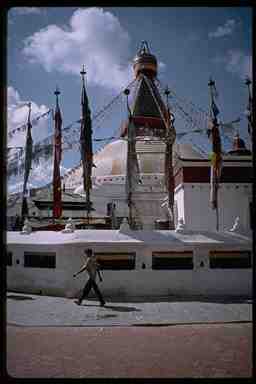
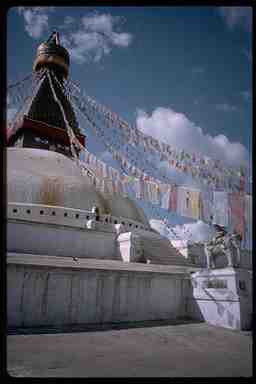
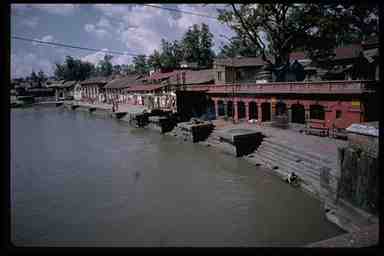
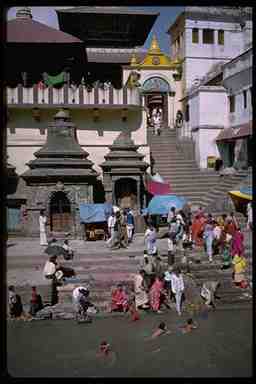
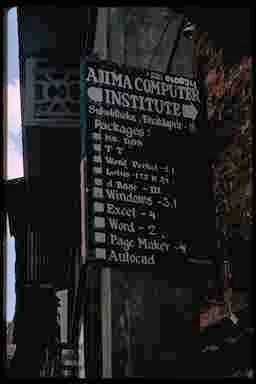
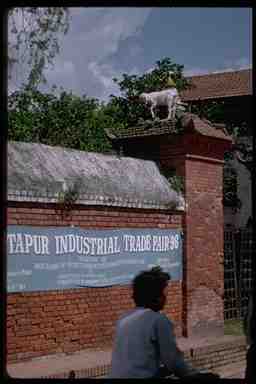
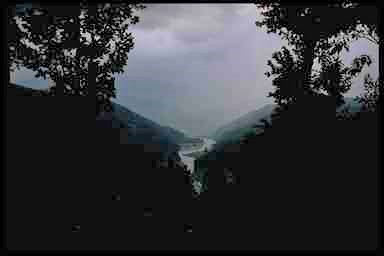
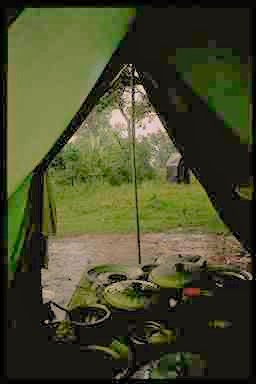

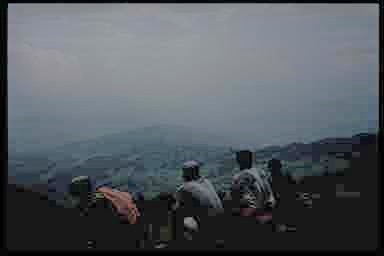
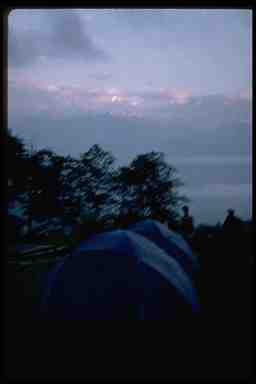
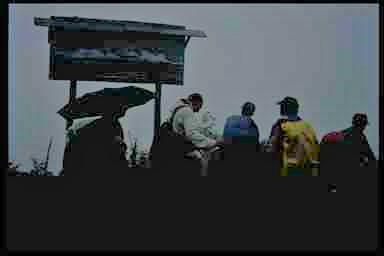
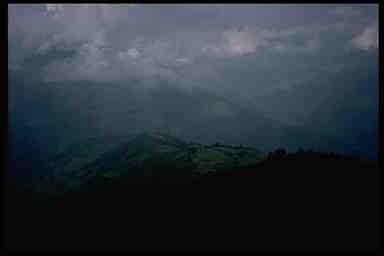
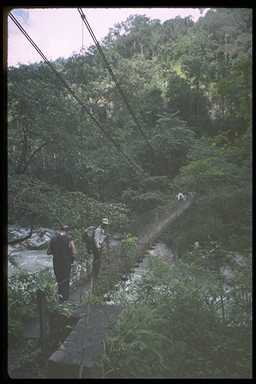

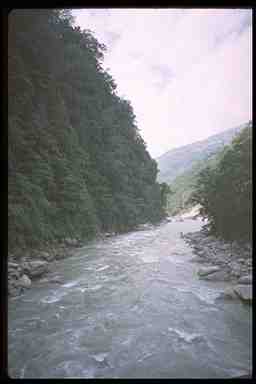
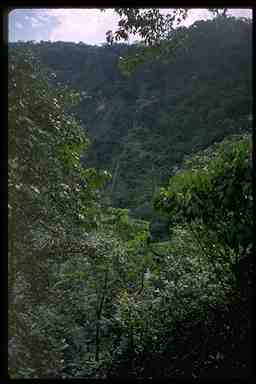
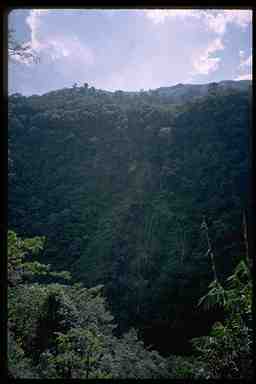
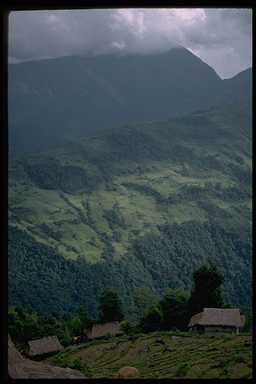
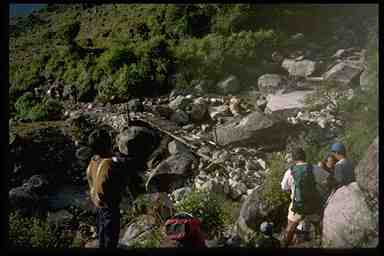
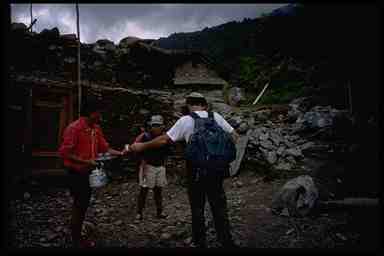

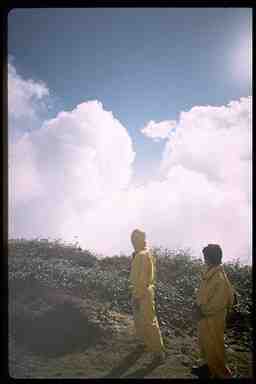
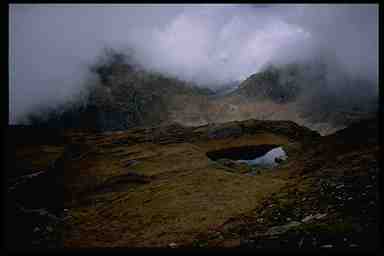
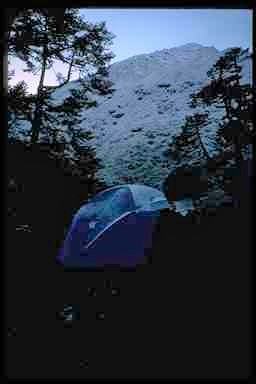

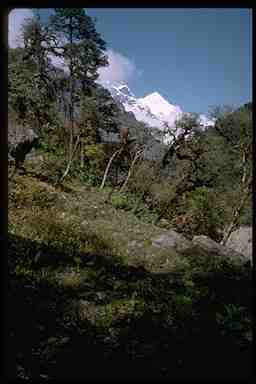
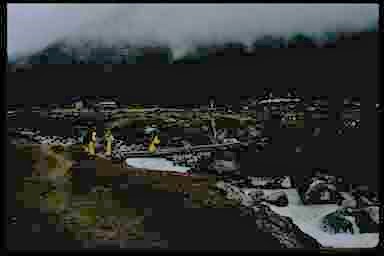

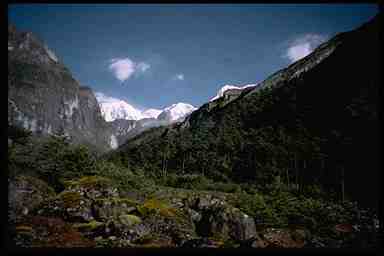

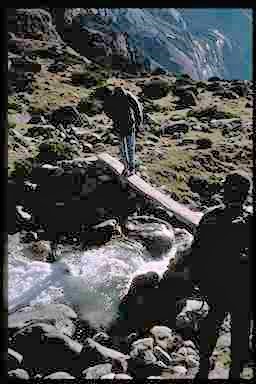
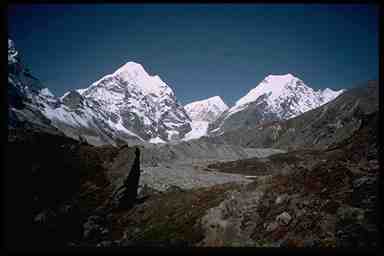

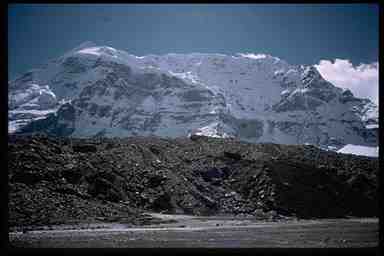
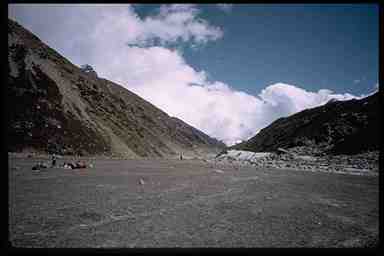
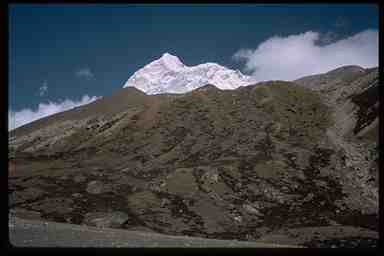
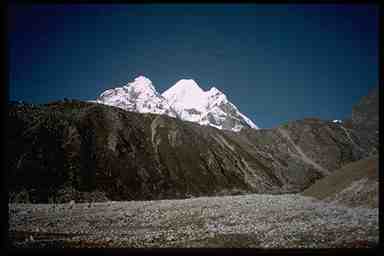
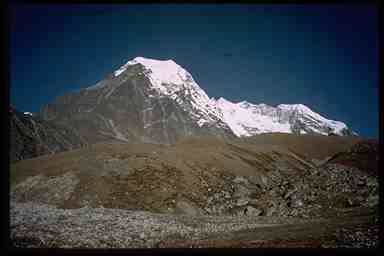
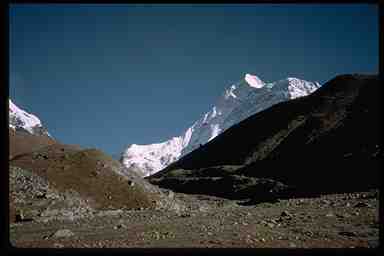
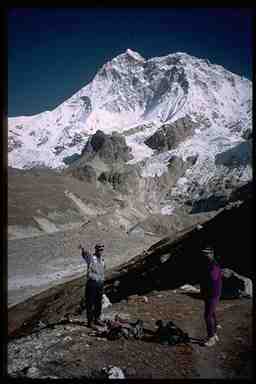
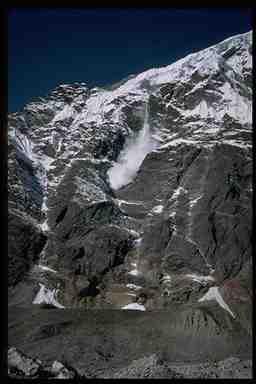
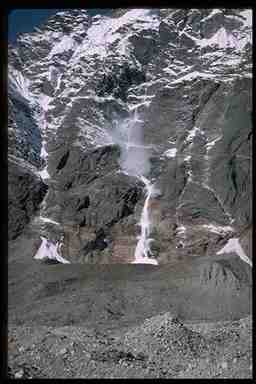
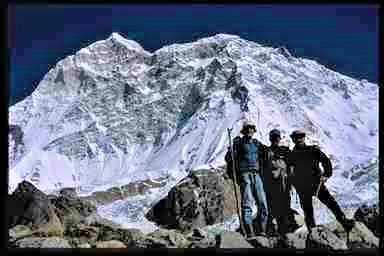

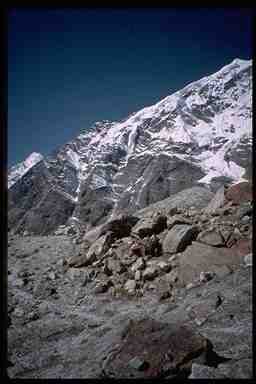
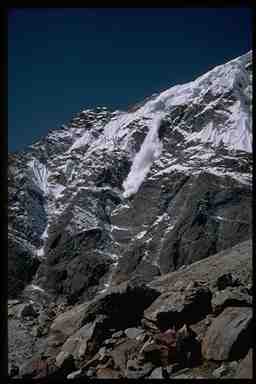
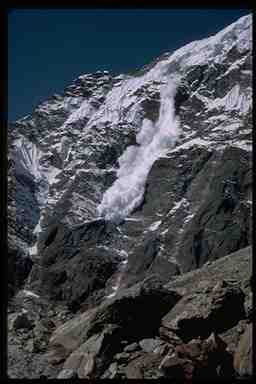
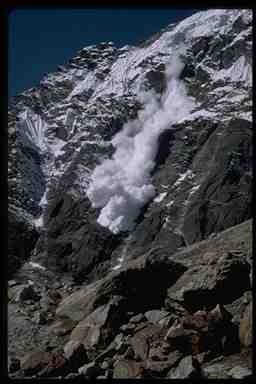
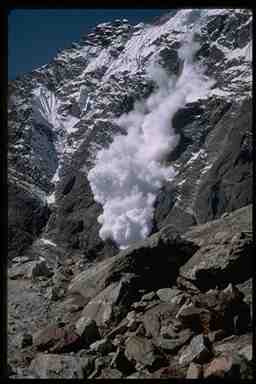
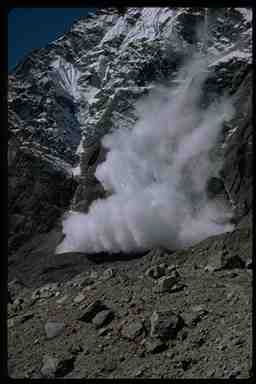
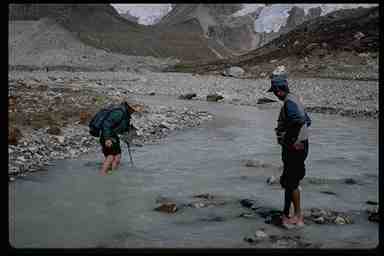
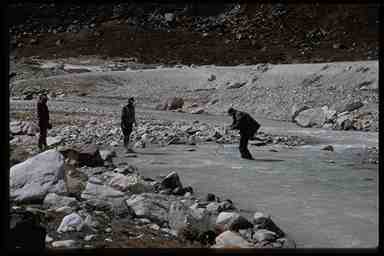
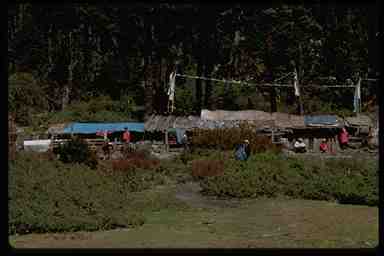
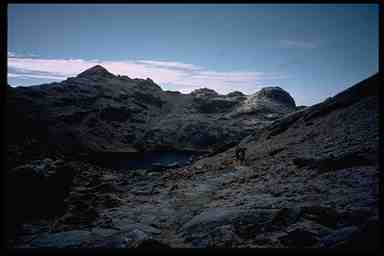
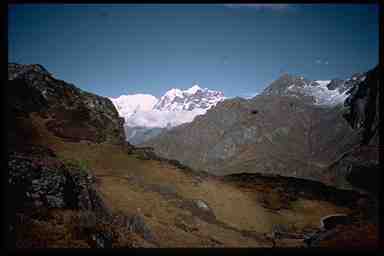

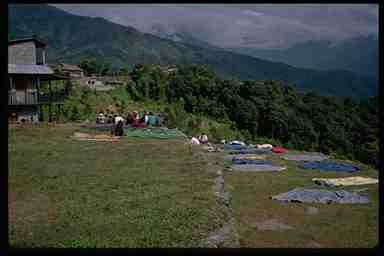
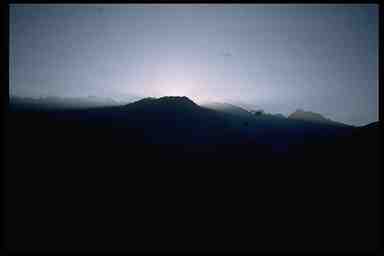
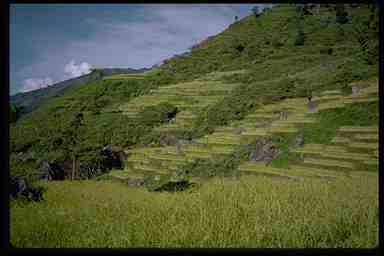

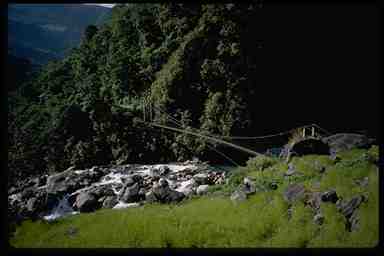

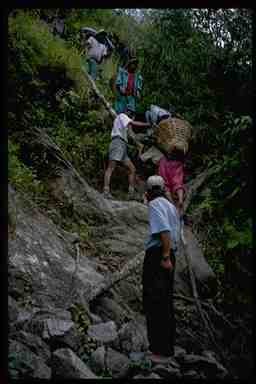
Back to Chronological List of Trips
Back to Home
I vacationed in Nepal leaving 10/4/96 and returning 11/1/96. I had a great time. We had a great group. And the Himalayas were as spectacular as ever.
My flights to Nepal were Indianapolis to Chicago to Los Angeles to Bangkok, Thailand (with a stop in Seoul, South Korea). Flights were such that we spent the night in the Bangkok Airport Hotel and then flew on to Katmandu, Nepal the next morning. After a day of touring in Katmandu we took a local flight to the area we were going to trek in. The flight was in a Chinese copy of a Canadian Twin-Otter, a propeller driven, unpressurized, 18 seat plane. We trekked for 19 days going to the base camp of Makalu, the fifth highest peak in the world. Coming back was just the reverse of going in, local flight back to Katmandu, rest day, and then flights to Bangkok, L.A., Chicago and Indy.
People know that Nepal is halfway around the world. But sometimes they don't realize just how long it takes to get there. Here are the travel times and time changes involved in each step of the journey to Nepal. All times are in hours.
Destination Travel Time Time Change ----------- ----------- ----------- Indianapolis 1 0 Chicago 0.5 0 L.A. 4 2 Seoul 12 8 Bangkok 5 2 Katmandu 3 1.25 ----------- -- ----- Totals 25.5 13.25
On any trek or hike, weather is always an important factor. On our first day on the trail, it started raining, then it started raining hard, then it started pouring. Someone made the comment that they thought the monsoon season was over. We had rain 7 of the first 8 days on the trail. However only the first day was enough to shut us down.
After those first 8 days, the weather generally followed a pattern. Mornings would be perfectly clear. About noon clouds would start rolling up the valley and by evening it would be totally overcast. But we only had one more day of any significant rain. We got snowed on a couple of times but nothing that ever accumulated. While the starting weather was a concern, everything turned out ok.
Actually I don't know if jungas is the correct spelling since I've never seen the word, just heard it. Junga is the local word for leach and we had to deal with them for part of the trip.
The place where we started trekking was quite low in altitude (about 1,500 feet) and quite tropical. All of the rain brought out the jungas. While the image of Humphry Bogart and "The African Queen" may come to mind, these leaches were not very big and not every dangerous. They were about the size of an inch worm. The longest I saw may have reached three inches at full extension. They were about as big around as a piece of pencil lead.
We found several on ourselves and on others. However I only got bitten once and it was exactly the way our trip leader described it would happen. I got to camp and took off my boots and socks. Inside one sock was a small streak of blood. I then spotted a small bite on my leg. These leaches just take a bite, drink their fill and then drop off.
Leaches have an anesthetic so you don't feel their bite and an anti-coagulant so that the wound doesn't close up too quickly for them. These properties are the reason there's an increased interest in leaches in medical research.
This section heading almost became the title of this report. One very interesting aspect of this trip was that at least some parts of it were new territories for almost everyone including our guide and the Sherpas. This area is not as frequently traveled as other parts of Nepal such as the Everest and Anapurna regions. So not only were people in our group not familiar with this region, the maps of it were not nearly as good as those for other areas.
It was interesting going into the dining tent before dinner and seeing Sergio, our leader, with the itinerary in one hand and a map of the area in the other. Some of the problems included major villages and bridges not appearing on the map, different spellings of place names and different maps not agreeing on names and locations of places.
Of course everything worked out just fine and on schedule. But, it was fun watching it all play out.
John was keeping a very detailed journal of the trip. One day Pasang, our Sherpa leader, said that he figured out the name of the village above our camp site that day. John got excited and asked him how to spell the name, knowing about the problem of different spellings of a name. Pasang replied that he didn't know how to spell the name in English, he only had the name in Nepalese script. And, this is one of the reasons for the various spellings of names. There isn't a fixed transcription from Nepalese to English.
As I was hiking along one day, I started thinking about how trekking differed from hiking. Of course the obvious differences are that trekking involves more hours per day on the trail and more days on the trail. Also trekking usually includes altitude to factor in.
However a major difference is the type of hiking involved. When hiking around central Indiana, there are many times what you can let your mind wander as you're going down the trail. On this trip, that's a good way to get yourself seriously injured.
The trails are very rocky and uneven. You have to constantly be watching where you put your feet. Almost every step must be considered and losing your concentration is a good way to take a tumble. It is a great relief to get to a section of trail where you can just put one foot in front of another and not have to concentrate on what you're doing. However this is usually a rare and short duration event.
What's sometimes frustrating is watching everyone who lives in these areas or does this type of hiking all the time. They just walk down these trails like we would walk down a sidewalk. Of course they were born and raised walking like this and it comes second nature to them. But it's still frustrating being so much poorer at this than they are.
Nepal has certainly heard of the Internet. In Katmandu, I saw a number of places where for about 60 cents you could send an e-mail message. This was less than the cost of an international airmail letter. The office of the trekking company that Mountain Travel contacts to actually run the trip had their own Internet connection. When we got back to Katmandu after the trek, I was going to send e-mail to a number of people just for fun. However the office was being remodeled when we got back and it would have been pretty tricky at that time.
Ralph brought a GPS (Global Positioning System) with him on the trek. It was about the size of a large television remote control device. He would activate it and it would pick up as many positioning satellites as possible to determine our location and elevation. It had a memory so you could store positions as we went along. It could then calculate distances between positions.
With the GPS we were able to determine that by adding distances from campsite to campsite, we covered 100.1 miles. Our longest day was 9.8 miles and our shortest 2.4 miles. Of course these distances are just point to point and don't allow for the ups and downs, switchbacks and other reasons you don't just hike in a straight line from one camp to the next. Still it was fun having any sort of numbers even with these drawbacks to them.
Finally, the village we flew into and out of at the start and end of the trek, Tumlingtar, had a public telephone. Of course the airfield had a radio to deal with flights. But there were no roads anywhere in the area. All goods which came to Tumlingtar had to be carried in by people. There was just the one phone, but our leaders used it to call the office in Katmandu to let them know that we were on schedule for our return.
The title for this report comes from an exchange that took place one day. We had just completed one of the longer and harder days heading in where we'd ascended from 6,000 feet altitude to 11,000 feet. 5,000 feet altitude gain in one day is quite a bit.
John asked Sergio: "So after today, everything else is just a piece of cake?"
Sergio: "Tough cake."
Sergio was right; there were more tough days to come. For example coming back out, we had one day where we descended 7,000 feet. While going down takes less energy, it's tougher on your muscles. Most experienced hikers prefer going up to going down.































































